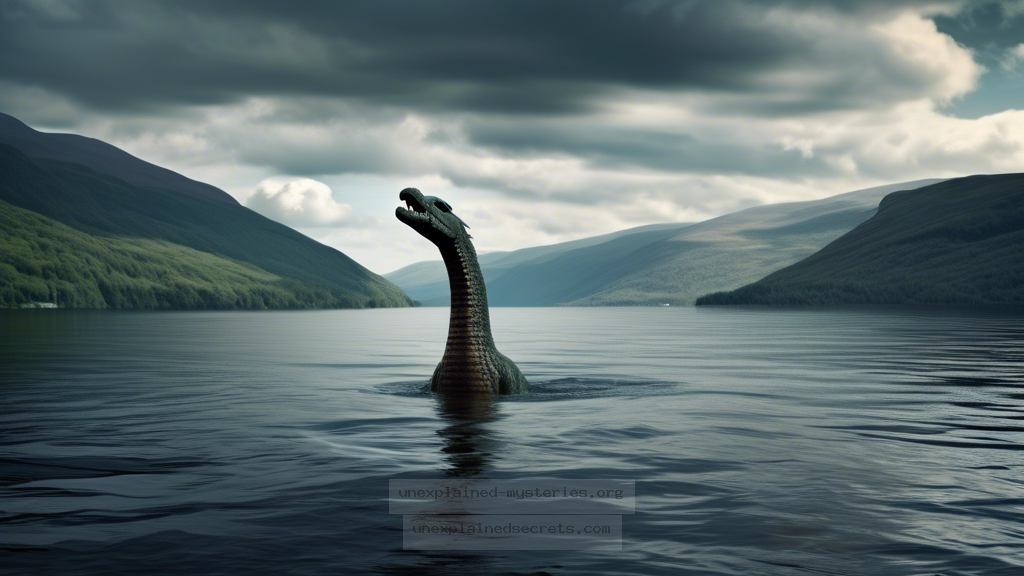What Secrets Lurk Beneath the Surface of Loch Ness: The Ongoing Quest for the Elusive Nessie?
What Secrets Lurk Beneath the Surface of Loch Ness: The Ongoing Quest for the Elusive Nessie?
Loch Ness, located in the Scottish Highlands, has been the epicenter of one of the most enduring cryptozoological mysteries— the legend of the Loch Ness Monster, affectionately known as Nessie. This enigmatic creature has captivated the imagination of people around the world for decades. But what lies beneath the surface of this deep freshwater lake, and why does the quest for Nessie continue to intrigue both believers and skeptics alike? In this post, we will explore the historical context, core theories, and ongoing research surrounding this iconic cryptid.
Historical Context: The Origins of the Legend
The legend of the Loch Ness Monster dates back to ancient times, with the first recorded sighting occurring in the 6th century when Saint Columba reportedly encountered a “water beast” in the River Ness. However, the modern fascination with Nessie began in the 1930s, coinciding with the publication of a famous photograph known as the “Surgeon’s Photograp” in 1934. This grainy image purportedly showed a creature resembling a large, long-necked animal swimming in the loch.
Since then, numerous sightings and alleged encounters have fueled the mythos. According to the Loch Ness Monster Official Site, there have been over 1,000 reported sightings of Nessie, leading to a surge in tourism and interest in the region. This influx has not only bolstered the local economy but also transformed Loch Ness into a cultural icon, featuring in literature, films, and various forms of media.
Core Concepts: What is Nessie?
What exactly is Nessie? Theories about the creature’s identity range from a surviving plesiosaur, a type of marine reptile from the age of dinosaurs, to a giant eel or even a large fish. Some researchers suggest that Nessie could be a misidentified otter or a floating log, while others believe it may be a unique species yet to be discovered.
In recent years, advancements in technology have allowed scientists to explore Loch Ness in unprecedented ways. For instance, sonar technology has been employed to map the lake’s depths and search for large creatures. However, these investigations have yielded mixed results, often leaving more questions than answers.
Practical Evidence: Sightings and Investigations
Documented sightings of Nessie have ranged from the credible to the downright bizarre. For example, in 2018, a couple captured what they claimed to be a “hump” in the water while on vacation at Loch Ness. This sighting gained traction on social media, reigniting interest in the elusive creature. However, skeptics quickly pointed out that the “hump” could easily be a wave or a boat in the distance.
Another notable case occurred in 2007 when a team of researchers from the University of Edinburgh conducted an extensive survey using sonar technology. They concluded that while they did not find any evidence of a large creature, the data did reveal some unusual readings. This ambiguity leaves room for the possibility that Nessie could exist, albeit in a form different from what witnesses have described.
Key Point: The use of sonar technology has both confirmed and denied the existence of large creatures in Loch Ness, illustrating the challenges of cryptozoological research.
Alternative Perspectives: Debunking the Myth
While many are eager to believe in the existence of Nessie, there is a robust counter-narrative that seeks to debunk the myth. Skeptics argue that many sightings can be attributed to hoaxes or misidentifications. The “Surgeon’s Photograph” itself was later claimed to be a hoax, with its creator admitting to staging the shot using a toy submarine. This revelation has led many to question the authenticity of other reported sightings.
Moreover, scientific studies have shown that the ecology of Loch Ness is not conducive to sustaining a large predator like a plesiosaur. The lake’s food chain and temperature do not support the survival of such a creature, leading many to conclude that the legend is simply a combination of folklore, human psychology, and a desire for adventure.
Common Misconceptions: Clarifying the Myths
One common misconception is that Nessie must be a gigantic creature, perhaps even a dinosaur. In reality, many eyewitness accounts describe the creature as being roughly the size of a seal. This discrepancy raises questions about the reliability of eyewitness testimonies, as human perception can be influenced by factors such as lighting, distance, and even emotional state.
Another misconception is that there have been no scientific studies conducted on Loch Ness. In fact, numerous investigations have been carried out over the years, utilizing a range of methodologies from sonar mapping to environmental DNA sampling. Yet, despite these efforts, definitive proof of Nessie’s existence remains elusive.
Best Practices for Investigation: What Can Be Done?
For those interested in investigating the Loch Ness Monster phenomenon, there are several best practices to consider:
- Documentation: Always document sightings and experiences in detail. Include date, time, location, and any environmental factors.
- Collaboration: Work with researchers and organizations that specialize in cryptozoology and marine biology.
- Use Technology: Employ modern technology such as drones, underwater cameras, and sonar to gather evidence.
- Stay Objective: Maintain an open mind and adhere to scientific methods to evaluate findings critically.
Warning: Engaging in unscientific or sensationalist practices can undermine legitimate research efforts and mislead the public.
Future Developments: What Lies Ahead?
The future of Loch Ness research promises to be as intriguing as its past. With advancements in genetic testing and environmental DNA (eDNA) analysis, scientists are now able to sample water and identify species inhabiting the lake. This approach has the potential to uncover previously unknown species and will either confirm or debunk the existence of Nessie once and for all.
Moreover, as technology continues to evolve, researchers can employ more sophisticated techniques, such as machine learning algorithms, to analyze large datasets collected from the loch. This could provide insights into patterns of sightings and the ecological dynamics of Loch Ness.
Conclusion: The Enduring Mystery of Nessie
The quest for the Loch Ness Monster is more than just a search for a legendary creature; it’s a fascination that taps into our love for mystery, adventure, and the unknown. While the existence of Nessie remains unproven, the stories and investigations surrounding this enigmatic figure continue to inspire curiosity and debate. Whether one is a believer or a skeptic, Nessie symbolizes the allure of the unexplained, reminding us that some mysteries may never be fully unraveled.
In summary, the legend of Nessie captivates our imagination, blending folklore, science, and human psychology. As we continue to explore the depths of Loch Ness, one thing is certain: the mystery of Nessie will persist, inviting future generations to join in the search.
Other Articles
Recent Posts
- What Happened to Flight MH370? The Conspiracy Theories That Still Haunt Us
- What Secrets Lurk Within the Walls of the Infamous Trans-Allegheny Lunatic Asylum?
- What Evidence Supports the Existence of Bigfoot in the Pacific Northwest?
- What Happened to the Indus Valley Civilization? Unraveling the Mysteries of Ancient Urban Life
- Can Telepathy Be Scientifically Proven Through Laboratory Evidence?







